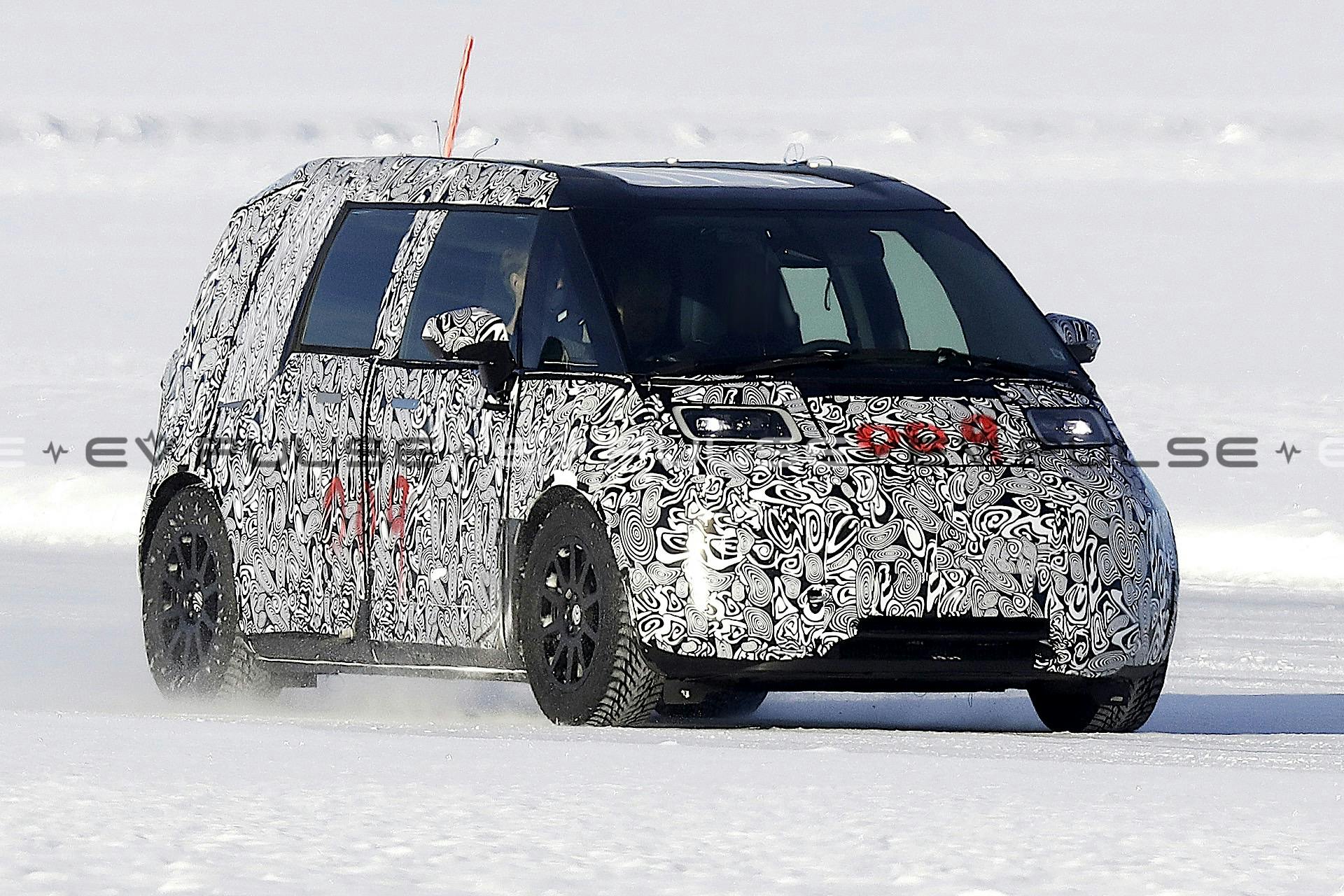We finally get our first glimpse of the Zeekr battery-electric vehicle that will serve in Waymo’s robotaxi fleet. This prototype was caught by spy photographers undergoing extreme cold-weather testing. To no one’s surprise, this BEV is essentially a rolling pod with four wheels. Its size looks similar to the standard-wheelbase Volkswagen ID. Buzz that’s going on sale in Europe later this year. The front and rear overhangs are extremely short and there’s an expansive glass area for optimum visibility. Small square-shaped headlights are mounted up close to the windshield. The rear end is nearly vertical, which should result in fewer cabin intrusions.
Waymo noted that the initial examples will have steering wheels to comply with U.S. federal standards. As we can see in these shots, that’s exactly the case with this prototype and there’s even a driver in there. Eventually, the steering wheel and pedals will go away over time, further opening up the cabin. Designed from the ground up in Gothenburg, Sweden specifically for ride-hailing, the Zeekr robotaxi will eventually replace the internal combustion vehicles in the Waymo fleet. Built on a dedicated BEV platform, it features a flat floor and a low step-in height to make entry and exit easier. The cars will also not have a B-pillar and feature two sliding doors, meaning they’re essentially autonomous passenger vans.
The final production version will feature a lot of passenger-friendly features including charging ports for electronic devices, sliding seats, and infotainment displays. Waymo One will be the first to use these Zeekr BEVs and will compete with companies like Uber and Lyft. Based on the announcement last year, the vans will have bench seats featuring a slim design to maximize passenger space and cargo capacity. Waymo also noted that the cabin will be highly reconfigurable to make it more versatile.
This isn’t the first time Waymo has collaborated with an automaker. When it first launched, Google’s autonomous driving arm used the Chrysler Pacifica Hybrid, a plug-in hybrid minivan for testing and transporting passengers as part of its ride-hailing business. Starting in 2018, Waymo began using the Jaguar I-Pace equipped with self-driving technologies for the Waymo One service. During the first two years of the crossover’s production, Waymo added up to 20,000 examples to its fleet. In total, the Waymo One fleet of I-Paces has the potential to make over 1 million trips per day.
Zeekr is a new brand under the Geely Umbrella that was established in 2021. Its first model is the 001, an all-electric four-door fastback wagon similar in size to the Porsche Panamera and underpinned by the SEA1 platform. With its two electric motors, the Zeekr 001 has 536 hp and 516 lb-ft of torque combined, enabling it to hit 100 km/h (62 mph) in 3.8 seconds.
Waymo’s purpose-built autonomous ride-hailing vehicle is being designed in Sweden at the China Europe Vehicle Technology Centre (CEVT). This facility is located in Gothenburg, the home of two other brands under the Geely umbrella, Volvo and Polestar, which make up the Volvo Car Group division. Geely says that Waymo’s self-driving transport pod will be built on an open-source mobility architecture. We suspect that it’s the SEA-C platform, which was developed specifically for commercial vehicle applications.

